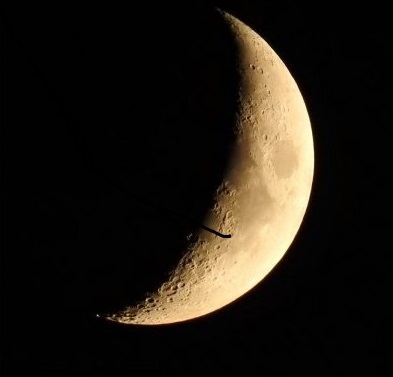During the ARRL EME contest I completed 15 QSO’s on 10GHz, including 6 initials. I was very pleased to work ON4CDU, my first 1.2m dish QSO. Being able to peak the dish on moon noise using the new nudge switches was extremely useful and I consistently saw 0.5 - 0.7dB of moon noise.
16 Aug 2025: OZ1FF -13/-19, F2CT -15/-15, OK1DFC -12/-19, ON5TA -13/-19, OZ1LPR -3/-19, DL4DTU -11/-15, OH3LWP -11/-19, ON4CDU -18/-22
KN3G controller The combination of the KN3G controller and slew drive have been working well but occasionally I need to peak the dish on sun or moon noise. When I built the controller I didn’t use any manual switches - all of the main functions I need are available through the Nextion touch display.
I’ve now added two SPDT biased switches to the front panel. They’re wired directly to the motor controllers and by uncommenting a line in rotator_features.
After a few failed attempts early last month, a combination of good moon conditions and fine, dry weather towards the end of May/early June helped to complete my first 10GHz EME QSOs.
On 22 May I completed my first ever 10GHz EME QSO with OZ1FF -13/-20, followed by ON5TA -12/-15, F6BKB -15/-18 on 23 May, and ON5TA -16/-19, G4YTL -16/-22 on 25 May.
10GHz EME May 2025
Operating position
Over the last couple of weeks, whilst waiting for moon conditions to improve, I took the opportunity to tackle a few issues.
Frequency accuracy I use an Icom IC-705 at 432MHz as the IF radio. To measure frequency accuracy I used WSJT-X in freqCal mode and harmonics from a Leo Bodnar GPSDO running at 10MHz fed through a 120dB attenuator. I also used the GB3VHF and GB3UHF beacons which can be copied at my QTH on a rubber duck antenna indoors.
In March I started looking for a 1.2m fibreglass dish as it was evident that the steel dish I was using for 10GHz would not be able to handle the extra weight of the SSPA and power supply mounted at the feed point. After making a few enquiries I found a Prodelin 1132 1.2m offset dish together with a feed arm. I also decided to change the lightweight patio stand used to mount the slew drive and dish for a stronger mount.
It’s been cold and bright for the last few days with good moon conditions so I setup the slew drive and dish outside to test moon tracking with the KN3G controller.
The first day was a bit frustrating. It took me a long time to get the dish pointed accurately at the sun and after calibrating azimuth and elevation I kept using the EEPROM Init button instead of the new EEPROM Save button that I had added.
I eventually got round to putting the KN3G controller into a case and have now completed some more bench tests. The controller has been configured with GPS, sun and moon tracking options so that once the Arduino sketch has been loaded it runs as a standalone unit, without the need for a PC or laptop. An unshielded 4 core cable is used for the motors and CAT8 S/FTP for the Hall sensor power and output.
Although it’s been a bit cold working in the garage over the last few days with the temperature close to 0°C, I’ve now completed the metal work for mounting the slew drive on a short stub mast.
The mast to bracket base plates I used for the 10GHz setup last year have been adapted for the dual axis slew drive. By installing the slew drive using M10 10mm spacers I have sufficient clearance between the two base plates for a full 360 deg.
The slew drive for the 10GHz offset dish arrived at the start of December and over the last few days I’ve been testing it on the bench with the KN3G controller I started working on in October.
The slew drive has two-channel Hall effect encoders built into each motor housing, one for azimuth positioning and one for elevation. Each sensor generates 2 pulses per revolution (ppr) on 2 channels but the KN3G controller just needs to use one channel.
For my first experiments on 10GHz I used a homebrew W1GHZ 10GHz transverter with a 432MHz IF. I recently bought a MKU 10 G5 transverter from Kuhne electronic (now part of Alaris Holdings) and plan to install it at the dish along with the DU3T LNA and Kuhne SSPA.
The transverter is small, measuring only 100 x 80 x 14mm, and has two 2.54mm pin headers, a 2 row 4 pin header for power and a 2 row 13 pin header for PTT, monitoring and frequency selection.
